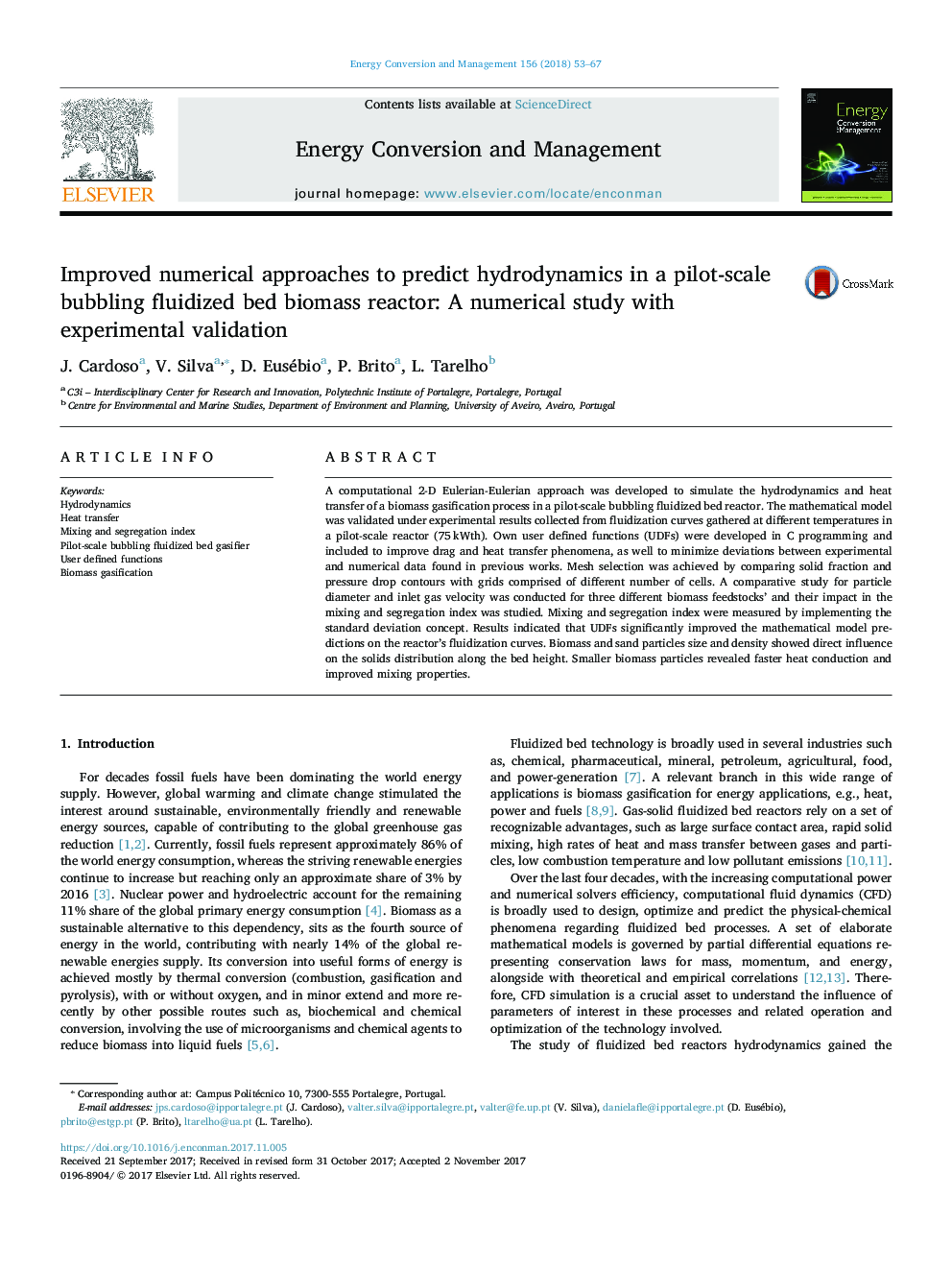| Article ID | Journal | Published Year | Pages | File Type |
|---|---|---|---|---|
| 7159457 | Energy Conversion and Management | 2018 | 15 Pages |
Abstract
A computational 2-D Eulerian-Eulerian approach was developed to simulate the hydrodynamics and heat transfer of a biomass gasification process in a pilot-scale bubbling fluidized bed reactor. The mathematical model was validated under experimental results collected from fluidization curves gathered at different temperatures in a pilot-scale reactor (75â¯kWth). Own user defined functions (UDFs) were developed in C programming and included to improve drag and heat transfer phenomena, as well to minimize deviations between experimental and numerical data found in previous works. Mesh selection was achieved by comparing solid fraction and pressure drop contours with grids comprised of different number of cells. A comparative study for particle diameter and inlet gas velocity was conducted for three different biomass feedstocks' and their impact in the mixing and segregation index was studied. Mixing and segregation index were measured by implementing the standard deviation concept. Results indicated that UDFs significantly improved the mathematical model predictions on the reactor's fluidization curves. Biomass and sand particles size and density showed direct influence on the solids distribution along the bed height. Smaller biomass particles revealed faster heat conduction and improved mixing properties.
Related Topics
Physical Sciences and Engineering
Energy
Energy (General)
Authors
J. Cardoso, V. Silva, D. Eusébio, P. Brito, L. Tarelho,
